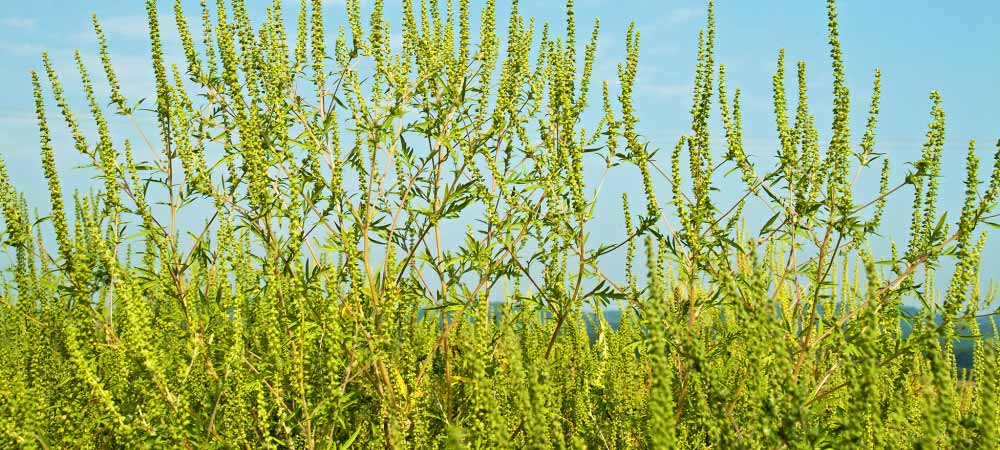3 Potential Causes For Your Fall Allergy Symptoms

Does the simple thought of fall allergies make you cringe? You’re not alone.
Of environmental allergy sufferers, 75% are allergic to ragweed, which is one of the most notorious allergens in the fall. But, ragweed isn’t the only pesky allergy trigger to watch out for during the fall season — mold allergy and allergic asthma are also of high concern.
Based on the Asthma and Allergy Network’s year-ahead forecasting, October 2021 could be the warmest in four years and the driest in seven years. This suggests we may be in store for a more intense allergy season. Why? Warm weather can spur mold growth and trigger plants, such as ragweed, to pollinate more. Dry air allows pollen to stay suspended in the air longer.
After experiencing the warmest and driest spring in nine years in 2021, you may feel like you can’t catch a break with your allergies.1 Plan ahead by checking the asthma and allergy forecast for your area and consider how treating the cause of your allergies with personalized allergy drop immunotherapy (also known as sublingual immunotherapy, or SLIT) could help you get on track to feeling better, especially during peak seasons.
Ragweed
It’s no surprise that ragweed is a notorious allergen — 17 different varieties grow across North America, each plant can produce up to 1 billion pollen grains in a single season, and its pollen can spread for hundreds of miles.
Ragweed pollen may cause seasonal allergic rhinitis, or hay fever, that may mimic a cold. But, symptoms can span the whole pollen season, such as:
- Sneezing and nasal congestion
- Eye and throat irritation
- Headaches
- Aggravated asthma symptoms, such as increased coughing and wheezing
- Oral Allergy Syndrome
August through September is the common ragweed pollen season timeframe for much of the U.S., but it can start as early as July and last into November in certain parts of the country (ragweed does not grow in Alaska).
Mold
Historically, mold allergy sufferers were limited on their options for treating the cause of mold allergies. Dr. David Morris, founder of Allergychoices and Allergy Associates of La Crosse, discovered that the primary immunotherapy method at the time, allergy shots, were difficult for his mold-allergic patients to tolerate. For farmers who needed to be outside during the high mold harvest season, that could significantly impact their livelihoods. Dr. Morris began researching options, attending SLIT seminars, and diving into European research. He began using it to treat these mold-allergic farmers and other patients who didn’t have success with allergy shots — and soon found that patients responded well and preferred this option.
Farmers are not alone in needing to watch out for mold — it can be found indoors or outdoors throughout the year. Poor ventilation and a lack of air conditioning can propel indoor mold growth in hot, humid conditions during the late summer and fall seasons.
Mold allergy symptoms occur when you breathe in mold spores:
- Allergic rhinitis
- Hives
- Aggravated asthma symptoms
- Delayed symptoms:
- Eczema
- Headache
- Malaise and fatigue
- Recurrent sinusitis
Since symptoms can vary so greatly, especially between patients, it may be tricky to determine what you’re allergic to without allergy testing.
Allergic Asthma
According to the Asthma and Allergy Foundation of America, over 25 million Americans have asthma, with over 60% of those cases being allergic asthma. High mold counts during peak ragweed season can lead to a difficult allergy season for patients allergic to both mold and ragweed, known as the “one-two punch.” It can be an especially dangerous time for asthmatic patients.
Pollen, animal dander, mold, and dust mites are common environmental triggers that can cause allergic asthma symptoms such as:
- Wheezing
- Shortness of breath
- Frequent respiratory infections
- Cough
- Chest tightness
- Irritated throat
Some patients with allergic asthma may experience symptoms on a daily basis. Others may have spikes on a seasonal basis, such as during the fall when pollen and mold counts rise.
Treating the Cause — Personalized to You
If you’re like 95% of allergy sufferers, you may rely on over-the-counter or prescription allergy medications to temporarily reduce your symptoms, especially during peak season. Inhaler medications for asthma work in the same way — they mask your symptoms temporarily, but don’t treat the underlying cause.
Allergy drop immunotherapy works to treat the cause of allergies and underlying disease, and may potentially eliminate your need for many allergy-related medications in the long term.
References:
- Webinar: Weather Forecasts and High Impact Allergy and Asthma Suffering. Allergy and Asthma Network. July 13, 2021.




